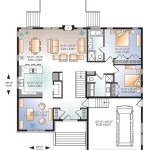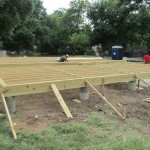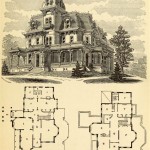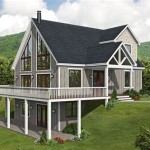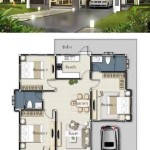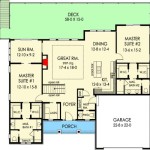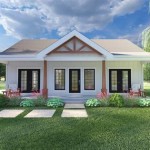House Plans On Sloping Lot: Designing For The Uneven Terrain
Building a home on a sloping lot presents unique challenges and opportunities. The uneven terrain requires careful planning and consideration to ensure the structure is stable, functional, and visually appealing. Designing a house plan for a sloping lot involves understanding the site's topography, adapting the layout to the slope, and maximizing the potential of the terrain. This article explores key considerations for designing house plans on sloping lots.
Understanding Site Topography
The first step in designing a house plan for a sloping lot is to thoroughly understand the site's topography. This involves analyzing the slope's angle, direction, and any natural features like trees or rocks. A professional surveyor can provide accurate measurements and create a topographic map that outlines the terrain's contours. Understanding the site's topography helps determine the best location for the house, identify potential challenges like soil erosion or drainage issues, and inform design decisions regarding foundation, landscaping, and access points.
Adapting the Layout to the Slope
Designing a house plan on a sloping lot requires adapting the layout to the uneven terrain. There are several approaches to consider:
- Split-Level Design: A split-level design utilizes the slope to create different levels within the house. This approach helps maximize space utilization and provides unique views from different floors.
- Walkout Basement: A walkout basement offers access to the backyard from the lower level, creating a versatile space for entertainment or living.
- Terraced Design: A terraced design incorporates stepped levels to create a more organic blend with the slope, ensuring stability and creating unique outdoor living spaces.
- Floating Design: A floating design elevates the house above the slope, minimizing the need for extensive excavation and preserving natural features.
The chosen design approach should consider the slope's angle, the desired living space, and the aesthetic preferences of the homeowner.
Maximizing the Potential of the Terrain
A sloping lot offers opportunities to create unique architectural features and maximize the potential of the site. Integrating the slope into the design can create breathtaking views, enhance natural light, and provide a sense of privacy. For example, utilizing the slope for a tiered garden, a cascading waterfall, or a natural outdoor staircase can create a harmonious blend between the house and the surrounding environment.
Foundation Considerations
The foundation is a crucial element in any house plan, particularly on a sloping lot. The chosen foundation type must be adapted to the site's specific conditions. A retaining wall may be necessary to support the slope and prevent erosion. A concrete foundation can provide stability and strength, while a pier and beam foundation might be suitable for steeper slopes. Consulting with a structural engineer is essential to ensure a stable and secure foundation.
Drainage and Erosion Control
Proper drainage is essential on a sloping lot to prevent soil erosion and damage to the house. A well-designed drainage system includes gutters, downspouts, and drainage pipes to divert water away from the foundation. Landscaping techniques, such as retaining walls, swales, and rain gardens, can also contribute to efficient drainage and erosion control.
Access and Parking
Planning for access and parking on a sloping lot is critical. The driveway must be designed to handle the gradient, with appropriate curves and turning radii to ensure easy navigation. Consider the need for retaining walls or other measures to stabilize the driveway and prevent erosion. The parking area should be level and accessible for vehicles, and adequate lighting is essential for safety.
Energy Efficiency
Designing a house plan on a sloping lot allows for thoughtful consideration of energy efficiency. Utilizing the natural slope to create passive solar heating and cooling systems can significantly reduce energy consumption. South-facing windows can maximize natural light and warmth, while incorporating overhangs and shading devices can provide protection from excessive heat. Strategic landscaping can also contribute to energy efficiency by providing windbreaks or shade.
Aesthetic Considerations
Designing a house plan on a sloping lot offers opportunities to create a unique and visually appealing structure that complements the terrain. Integrating natural elements like stone, wood, or metal can create a harmonious blend between the house and the surrounding environment. Landscaping plays a vital role in enhancing the aesthetics of the property, with thoughtful plant selections, walkways, and outdoor lighting creating an inviting and harmonious atmosphere.

Plan 51696 Traditional Hillside Home With 1736 Sq Ft 3 Be

House Plans For A Sloped Lot Dfd Blog

Modern House Plan Sloping Lot Contemporary Style 5590 Vista

Sloping Lot Contemporary Style House Plan 1100 Sundown

House Plans Home Designs

Duplex For A Down Sloping Lot 8188lb Architectural Designs House Plans

Plan 6865am Contemporary Home For A Sloping Lot House Plans Craftsman

Sloping Lot House Plan Four Bedrooms Living Room On The Second Floor Mountain Plans

Home Plan Ch507

Dream House Plans For Sloping Sloped Lots

